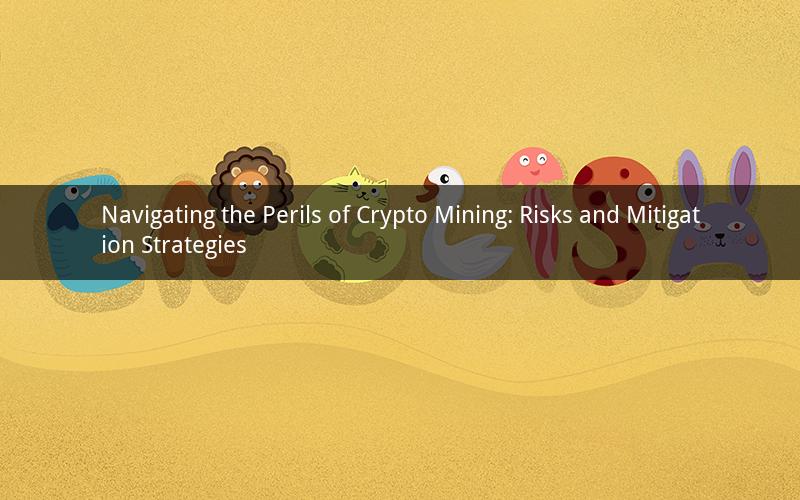
Introduction
Cryptocurrency mining, a process that validates and adds new transactions to a blockchain, has gained immense popularity. However, along with the potential for financial gains, mining poses several risks. This article delves into the various aspects of crypto mining risks and provides strategies to mitigate them.
Risks Associated with Crypto Mining
1. High Energy Consumption
Crypto mining requires substantial energy, which leads to high electricity costs. The energy consumption of mining operations can vary depending on the type of hardware used, the complexity of the algorithm, and the cost of electricity in different regions. Mining in countries with affordable electricity can be profitable, while mining in regions with high electricity costs may not be as rewarding.
2. Equipment Failure
Mining equipment is prone to failures, which can lead to financial losses. The hardware, including ASICs (Application-Specific Integrated Circuits), GPUs (Graphics Processing Units), and CPUs (Central Processing Units), can break down due to wear and tear, dust accumulation, or electrical issues. Regular maintenance and proper cooling systems can help minimize equipment failures.
3. Market Volatility
The value of cryptocurrencies, such as Bitcoin, Ethereum, and Litecoin, is highly volatile. Mining operations can become unprofitable if the price of the cryptocurrency drops significantly. Investors should monitor the market closely and adjust their mining activities accordingly.
4. Security Risks
Hackers and cybercriminals target mining pools and individual miners, seeking to steal cryptocurrency or disrupt operations. Mining operations should implement robust security measures, such as using firewalls, antivirus software, and secure mining pools, to protect their assets.
5. Legal and Regulatory Risks
The legal status of crypto mining varies by country and region. In some places, mining is legal and even encouraged, while in others, it is illegal or subject to strict regulations. Miners should stay informed about the laws and regulations in their jurisdiction to avoid legal consequences.
Mitigation Strategies
1. Efficient Hardware Selection
Choosing the right hardware for mining is crucial. Miners should focus on ASICs and GPUs with high hashrate and low power consumption. Additionally, using energy-efficient cooling systems can help reduce electricity costs and minimize hardware wear and tear.
2. Diversify Mining Operations
Investing in multiple cryptocurrencies can help mitigate the risks associated with market volatility. By diversifying their mining portfolio, miners can minimize losses when the price of a particular cryptocurrency falls.
3. Optimize Mining Setup
Miners should ensure their mining setup is optimized for performance and efficiency. This includes using high-quality power supplies, adequate cooling systems, and maintaining clean and organized mining facilities.
4. Stay Informed about Security Measures
Regularly updating antivirus software and using secure mining pools can help protect against cyber threats. Miners should also be cautious about sharing sensitive information, such as private keys and wallet addresses, to prevent theft.
5. Monitor and Adapt to Market Conditions
Staying informed about the market and adjusting mining operations accordingly can help mitigate the risks associated with market volatility. Miners should keep an eye on cryptocurrency prices, transaction fees, and other factors that can impact their profitability.
Conclusion
Crypto mining, while offering the potential for financial gains, is not without risks. By understanding the associated risks and implementing appropriate mitigation strategies, miners can increase their chances of success in this competitive field.
Questions and Answers
1. What is the primary reason for high energy consumption in crypto mining?
High energy consumption is primarily due to the computational power required to solve complex mathematical problems in blockchain networks.
2. How can miners mitigate the risk of equipment failure?
Miners can minimize equipment failure by using energy-efficient hardware, maintaining clean and organized facilities, and implementing proper cooling systems.
3. What are some legal and regulatory risks associated with crypto mining?
Legal and regulatory risks include varying laws and regulations in different regions, potential tax implications, and the potential for government crackdowns on mining activities.
4. How can miners adapt to market volatility in the crypto mining industry?
Miners can adapt to market volatility by diversifying their mining portfolio, staying informed about market trends, and adjusting their mining operations accordingly.
5. What are some essential security measures for crypto mining operations?
Essential security measures for crypto mining operations include using secure mining pools, regularly updating antivirus software, and keeping private keys and wallet addresses confidential.